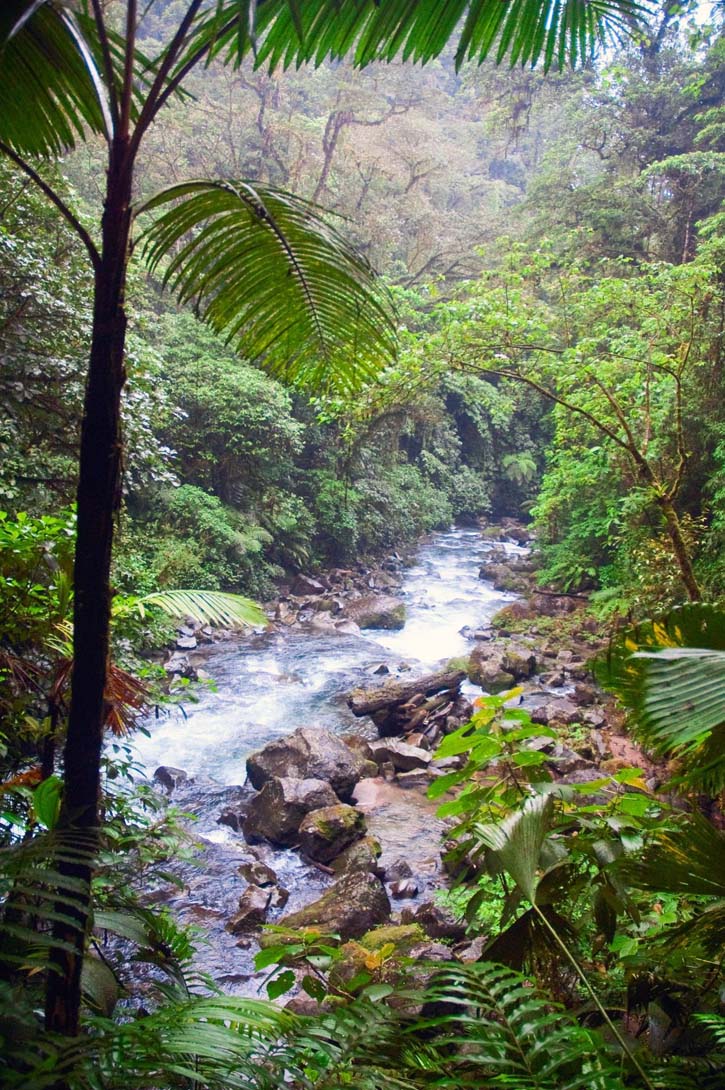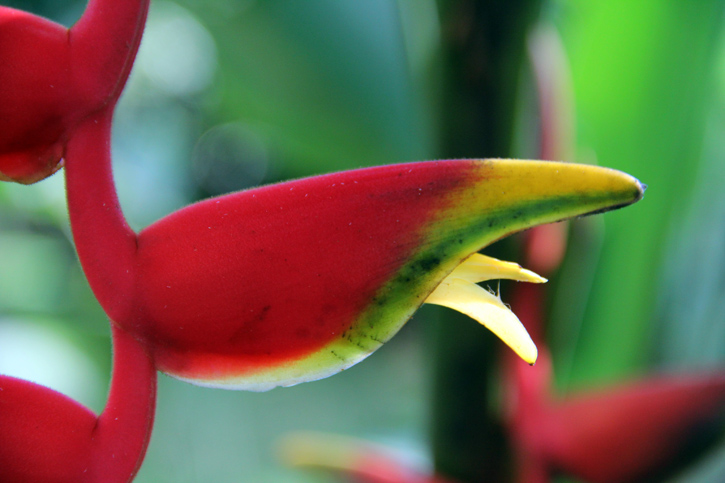In 1947 biologist L. H. Holdridge introduced a system of classifying vegetation types or “zones” according to a matrix based on combinations of temperature, rainfall, and seasonality. Each zone has a distinct natural vegetation and ecosystem. Costa Rica has 12 such zones, ranging from tidal mangrove swamps to subalpine páramo with stunted dwarf plants atop the high mountains.
In the Cordillera Talamanca, conifers of South American provenance are joined by North American oaks.Costa Rica’s tropical location, in combination with its remarkable diversity of local relief and climates, has resulted in the evolution of a stupendously rich biota. Some habitats, such as the mangrove swamps, are relatively simple. Others, particularly the ecosystem of the tropical rainforests of the Caribbean lowlands and the Nicoya and Osa Peninsulas, are among the most complex on the planet.
The Arenal conservation area of Costa Rica is just one of the areas where you can see the diversity of the tropical rainforest. Photo © bryndin/123rf.
The lowland rainforests have strong affinities with the selva (rainforest) of South America and form a distinctive assemblage of species in which the large number of palms, tree ferns, lianas, and epiphytes attest to the constant heat and humidity of the region. The impressive tropical rainforest of eastern Costa Rica and the Nicoya and Osa Peninsulas gives way on the Central Pacific to a dry evergreen forest at lower elevations and dry deciduous forest farther north. Above about 1,000 meters (3,300 feet), the species are fewer and the affinities with North America are stronger. In the Cordillera Talamanca, conifers of South American provenance are joined by North American oaks. Above the tree line, approximately 3,000 meters (9,800 feet), hikers familiar with the mid-elevation flora of the high Andes of Peru and Ecuador will find many similarities in the shrubby open landscape of Costa Rica’s cordillera.
The forests and grasslands flare with color. Begonias, anthuriums, and “blood of Christ,” named for the red splotches on the underside of its leaves, are common. My favorite plant is the “hot lips” (labios ardientes), sometimes called “hooker’s lips” (labios de puta), whose bright-red bracts remind me of Mick Jagger’s famous pout. The vermilion poró tree (the bright flame-of-the-forest), pink-and-white meadow oak, purple jacaranda, and the almost fluorescent-yellow corteza amarilla all add their seasonal bouquets to the landscape. The morning glory spreads its thick lavender carpets across lowland pastures, joined by carnal red passionflowers (their unromantically foul smell is a crafty device to enlist the help of flies in pollination).

Heliconias are a member of the banana family and some 30 species can be found in Costa Rica. Heliconia rostrata is also known as Hanging Lobster Claw. Photo © Joan Simon, licensed Creative Commons Attribution Share-Alike.
Costa Rica is a nation of green upon green upon green, including more than 9,000 species of higher plants and no less than 2,000 species of bromeliads. Of heliconias (members of the banana family) there are some 30 species. It has many more species of ferns—about 800—than all the rest of North America, including Mexico. Ferns grow sometimes four meters (13 feet) tall, with fiddleheads large enough to grace a cello. Others are epiphytes, arboreal “nesters” that take root on plants but that are not parasitic.
The epiphytic environment is extremely poor in mineral nutrients. The bromeliads—brilliantly flowering, spiky-leafed “air” plants—have developed tanks or cisterns that hold rainwater and decaying detritus in the whorled bases of their tightly overlapping stiff leaves. The plants gain nourishment from dissolved nutrients in the cisterns. Known as tank epiphytes, they provide trysting places and homes for tiny aquatic animals high above the ground.
All plants depend on light to power the chemical process by which they synthesize their body substances from simple elements. Height is therefore of utmost importance. When an old tree falls, the strong unusual light triggers seeds that have lain dormant, and banana palms and ginger plants, heliconias and cecropias—all plants that live in the sunshine on riverbanks or in forest clearings—burst into life and put out big broad leaves to soak up the sun. Another prominent plant is the poor man’s umbrella (sombrilla del pobre), whose giant leaves make excellent impromptu shelters.
Excerpted from the Tenth Edition of Moon Costa Rica.